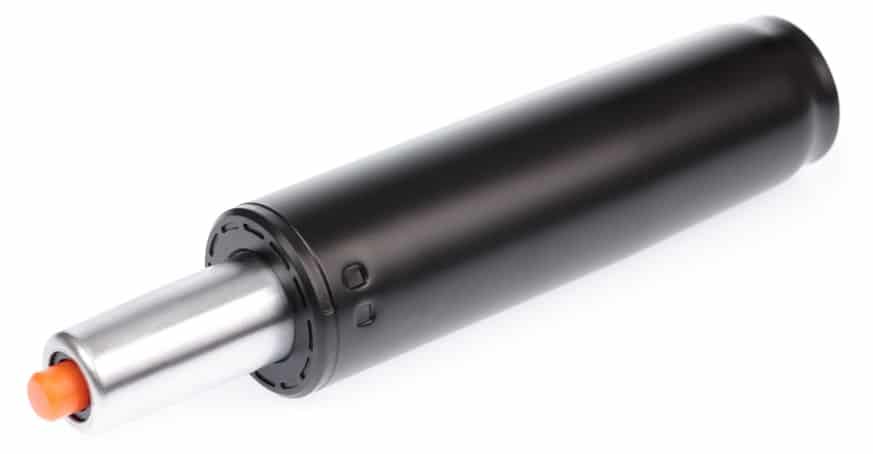Adjustable office chairs are great for office workers so they can make themselves as comfortable as possible at work.
However, these chairs can be finicky sometimes. If your office chair isn’t performing how it should, there are some common problems you may be experiencing. Luckily, there are some quick fixes to get your hydraulic chair back to work.
This guide will break down hydraulic versus pneumatic office chairs to help you understand what is wrong with yours and the best way to remedy it. Before you toss out the troublesome chair, try these tips to see if you can save your hydraulic chair.
How Do Hydraulic Chairs Work?
Hydraulic chairs combine liquids and gasses to raise and lower the chair using pressure. Hydraulics are utilized in factories often because they can operate with little energy used.
We will discuss how to fix a hydraulic chair, but pneumatic chairs are also common in offices. This guide is specifically for hydraulic chairs, but most tips work for both types of chairs.
Hydraulic
Hydraulic chairs use imperceptible liquid to make the chair go up and down as needed. Because of how this works, hydraulics are used in large machinery in the same manner.
Hydraulic chairs consist of a base chamber, a seat, two hollow chambers, one full of a compressible liquid while the other has pressurized gas. It also has a hollow conduit and a lever that allows you to adjust the height of the chair.
Pneumatic
Pneumatic chairs use compressible gasses and are most common in office and computer chairs. They are usually simpler to fix and consist of a base, a seat with a support pillow, a gas cylinder with compressed gas, and a lever to adjust the height.
Common Problems
The most common issues with hydraulic chairs are issues with the height adjustment and then noisy chairs. For fixes for these problems, keep reading and save yourself the headache of buying a new office chair.
Chair Keeps Sinking
There are a few tricks you can try to stop your chair from sinking.
Hose Clamp and Duct Tape
The combination of hose clamps and duct tape act as a spacer on the bottom of your chair. Lift the chair to the desired height and then apply the duct tape so the clamp has something to grip onto.
This is a cheap and easy solution but won’t last forever. If you are just looking for a temporary solution, this is a great option to make your chair more comfortable.
PVC Pipe
PVC pipe can also act as a spacer to keep your chair set at the desired height. But this method involves a great deal of do-it-yourself, like having to measure the chair and cut the PVC pipe yourself. If you aren’t comfortable doing so, this isn’t the method for you.
The PVC pipe is measured to slip around the gas cylinder that isn’t working anymore. The piece of pipe will hold up the chair to the height you want it at, but this is also a temporary solution to the sinking problem.
Chair Riser
A chair riser is a set of buttons that attaches to the bottom of the chair to allow it to be adjustable without the use of the gas cylinder, which is usually the source of the sinking. Chair risers are affordable and require no disassembly of the chair, making them a super convenient option for frustrated office workers.
Chair Saver Kit
A chair saver kits are an affordable, easy option. These kits come with a series of rings. The rings fit onto the piston of the gas cylinder to help hold it up and prevent the chair from sinking. You can find these at most office stores or order them online, and the best part is they last years.
Replace the Gas Cylinder

This is the easiest and quickest way to fix your chair. If you don’t mind paying a bit of money, replacing your gas cylinder is relatively simple. It involves some slight disassembly of the chair, but you only need to pull off part of the base to insert a new cylinder.
What to Do If Your Chair Won’t Go Down
Sometimes hydraulic chairs refuse to sink, creating a whole new problem. There are a few reasons for this and some tricks to solve them.
Not Enough Weight
Your chair may not be sinking simply because you are too light and aren’t putting enough weight on the chair for the piston to lower. The best way to fix this is to bounce on your seat while using the liver. The force should push the chair down so you can adjust to the proper height.
Broken Lever
If your lever has snapped off, you will just need to replace it. But if the lever just isn’t doing its job, it may be loose and need to be tightened. To do this you will need to remove the legs and starbase from the chair. And then screw the lever in as tight as you can.
Replace Gas Cylinder
Just like with a sinking chair, a stubborn chair may need a replacement gas cylinder. This is simpler than it sounds, but you do need to buy a new gas cylinder for your specific hydraulic chair.
Squeaking Chair
If your chair is squeaking, the best thing to do is use some lubricant to grease the pieces. Make sure all the screws and bolts are tightened well. These are the most common sources of squeaking and are super simple to fix on your own.
Bottom Line
Hydraulic chairs aren’t as complicated as they seem. Most problems can be solved on your own, so before shopping for a new chair, try these tricks to save your chair and restore workplace comfort.